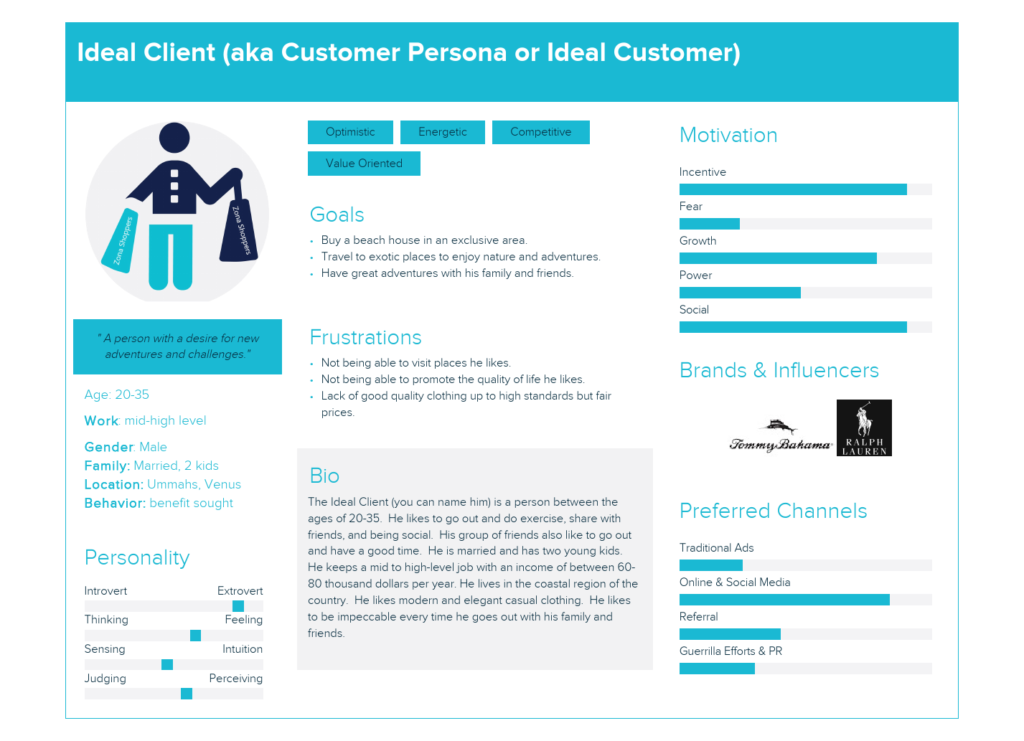How to Create a Customer Persona That Will Help You Find and Close More Customers
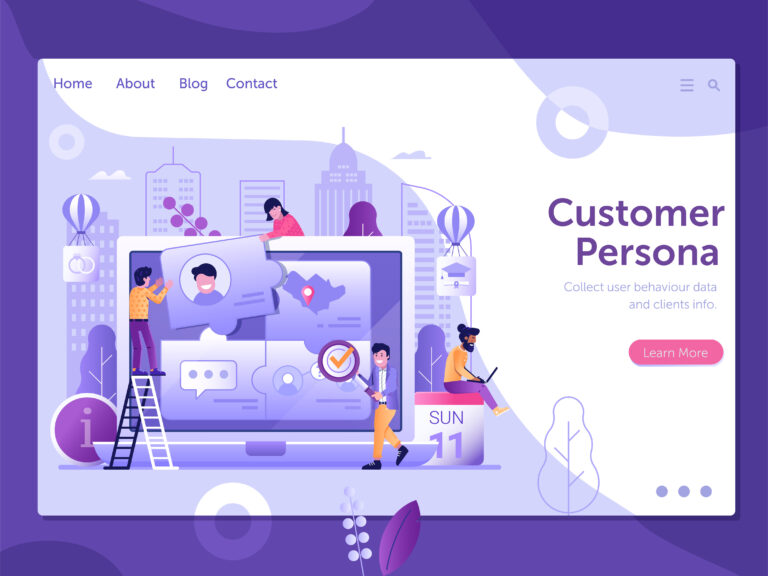
Is it Buyer or Customer Persona?
“Buyer persona” and “customer persona” are both commonly used terms in marketing, and they generally mean the same thing. Both refer to a semi-fictional representation of your ideal customer based on market research and real data about your existing customers. These personas help businesses understand their customers (or potential customers) better, and make it easier for them to tailor their content, messaging, product development, and services to meet the specific needs, behaviors, and concerns of different groups.
The terms are typically used interchangeably, but sometimes “buyer persona” is used more specifically in B2B marketing, while “customer persona” is often used in B2C contexts. Ultimately, the specific terminology isn’t as important as the concept itself: understanding who your target customers are, and what they want and need.
How to Create a Buyer or Customer Persona?
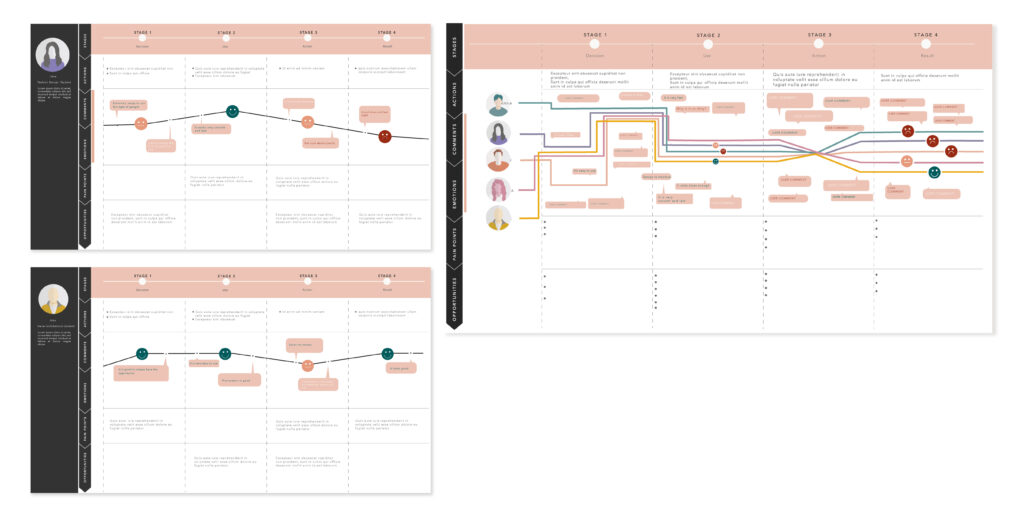
Creating a buyer or customer persona involves conducting thorough research, surveys, and interviews with your current and potential customers. Here’s a simple step-by-step process:
-
Research Your Audience: Gather information about your current customers through surveys, feedback, and reviews. Look for patterns in their behavior and note demographic information such as age, gender, location, and occupation. If you have analytics tools integrated with your website or social media platforms, use them to gain more insights about your audience.
-
Interview Customers and Prospects: This gives you a chance to delve deeper into their pain points, goals, preferences, and habits. You can do this either in person, over the phone, or through online platforms. Include both customers who are satisfied and those who’ve had issues, as you can learn from both experiences.
-
Segment Your Audience: Based on your findings, segment your audience into different personas. Start by creating one to three personas, then expand as needed. Remember, the quality of the personas is more important than the quantity.
-
Detail the Persona: Each persona should include the following:
- Demographics: Age, gender, education, income, and location.
- Background: Job, career path, and family.
- Psychographics: Goals, challenges, values, fears, and interests.
- Behaviors: Shopping habits, product usage, and brand interactions.
- Environment: Their physical environment, as well as their friends, family, and colleagues.
-
Name Your Persona: Giving your persona a name can help make it more real and relatable for your team. Some businesses even like to create a visual representation of the persona.
-
Apply Your Personas: Use your buyer personas to guide product development, tailor your marketing strategies, adjust your customer service approach, and make other business decisions. Always consider how each decision will impact each of your personas.
-
Review and Revise: As you learn more about your customers and as market conditions change, it’s important to review and update your personas. Regularly check that they still represent your target customers accurately.
Remember, the goal of a buyer persona is to understand and cater to your audience better. The more detailed you can make your personas, the better you can personalize your approach to meet their needs.
Why is Developing a Buyer or Customer Persona Essential?
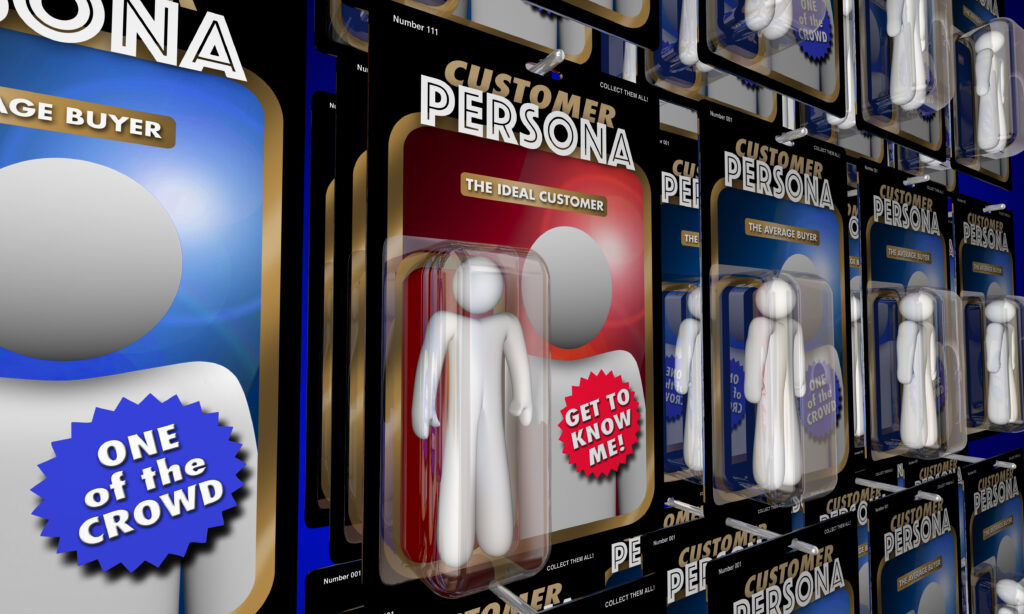
Have you ever pondered why campaigns from big-name brands like Coca-Cola or Nike are so effective? Is it solely because of their products, or could it be because they deeply understand their ideal customers – their buyer or customer personas? Consider their commercials: Whom do they appeal to? How do they determine their customers’ appropriate price, color, or style?
Defining your ideal buyer, also known as a buyer persona, can seem like a daunting task without the right tools. However, failing to do so could prolong the journey towards achieving your business goals. In addition, not knowing your target niche means you could be missing out on crafting effective marketing strategies, tailoring your products, and even setting suitable pricing strategies.
Here are a few compelling reasons why defining your ideal client is crucial:
- Building Closer Customer Relationships: By understanding your customers’ needs and problems, you can establish deeper and more meaningful relationships with them.
- Enhanced Product Reach: A clear understanding of your buyer persona enables you to manage your marketing campaigns more effectively, leading to better product reach.
- Appealing to Emotions: Buyer personas can help you tap into the psychological aspects inherent in marketing by appealing to the feelings and emotions of your target audience.
- Improved Customer Segmentation: By grouping customers into distinct personas, you can obtain more precise analytical data and insights.
Remember, creating a detailed buyer persona is not just a one-time task but an ongoing process that should evolve as your customers, products, and market dynamics change.
First Understand the Concepts Behind the Making of a Customer Persona or Ideal Customer

Target Segmentation
Target segmentation, also known as market segmentation, is breaking a large market into subsets of customers or segments with similar requirements, interests, and priorities. These categories are then targeted using marketing tactics tailored to their distinct qualities.
Target segmentation allows a company to customize its marketing efforts to the appropriate client group. Instead of considering the market as a whole, segmentation enables businesses to concentrate on certain portions of the market they can best serve.
Segments may be formed using several criteria, including:
Demographic segmentation: is based on demographic statistics such as age, gender, ethnicity, income, and education.
Geographic segmentation: is based on the consumer’s geography, such as their nation, region, city, or even neighborhood.
Psychographic segmentation: is based on values, beliefs, interests, and attitudes.
Behavioral segmentation: is based on behaviors such as product consumption patterns, brand loyalty, and decision-making processes.
Businesses may design focused marketing strategies and services that best fit the demands of their prospective clients by knowing these various market groups.




Demographic Segmentation

Demographic segmentation divides a broad market into specific segments based on attributes like age, gender, income level, education level, marital status, occupation, and ethnicity. The more specific attributes you consider, the more precise your segmentation becomes, ultimately leading to more targeted and effective marketing strategies.
So, why is demographic segmentation important? It allows you to categorize your market into distinct groups, enabling you to understand each group’s behavior, needs, and challenges. This understanding helps tailor your messaging, products, and services to meet the specific needs of each demographic segment.
To give you a better understanding, let’s consider some examples:
-
Age: This can be broken down into very specific categories, such as 24-year-olds, 26-year-olds, and 30-year-olds. Each age group will have different needs, preferences, and buying behaviors.
-
Household Composition: This could refer to families with one child, two children, etc., or the number of earners in a household. Different compositions will have varying needs and purchasing power.
Remember, the goal of demographic segmentation is to help you tailor your approach to best suit the unique characteristics of each segment. It’s a crucial tool for developing effective marketing and sales strategies.
Some strategies to consider when conducting demographic segmentation:
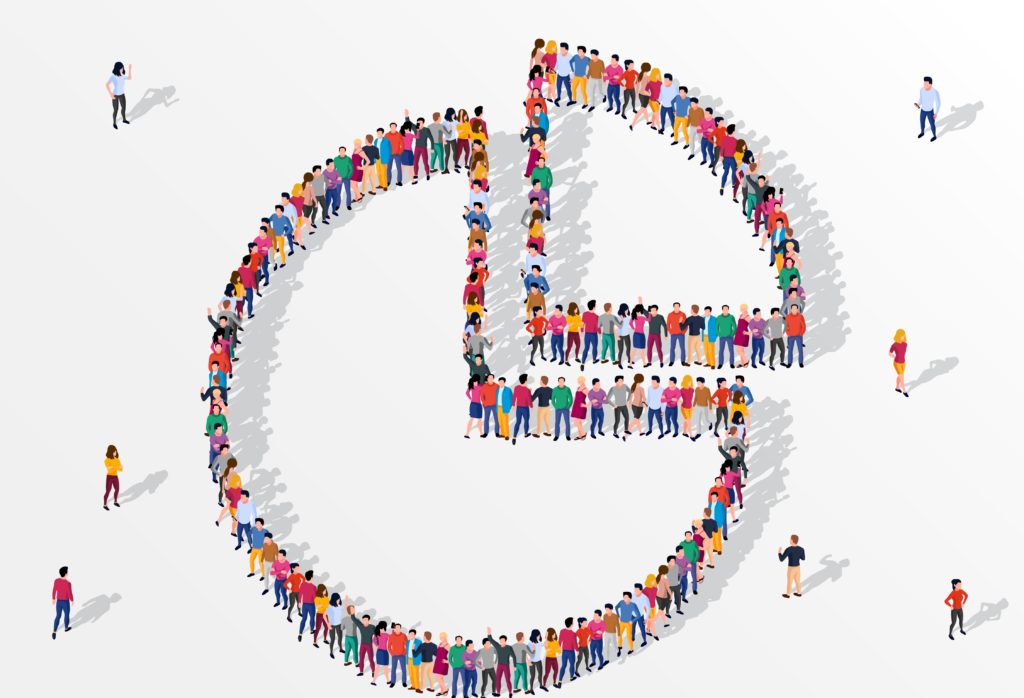
-
Start with Basic Demographics: Begin your segmentation process with basic demographic data such as age, gender, income, and education level. These are straightforward data points that can quickly give you a broad understanding of your market segments.
-
Consider Cultural and Societal Factors: Factors such as religion, ethnicity, and language can significantly affect a customer’s needs and buying behavior. Take these into account in your segmentation.
-
Prioritize Relevant Variables: Depending on your product or service, certain demographic factors may be more relevant than others. For example, if you’re selling luxury goods, income level will be a crucial demographic variable.
-
Use Surveys and Interviews: You can gather demographic information through surveys and interviews. Ask customers for their feedback and learn more about their needs, preferences, and frustrations.
-
Leverage Your Existing Data: Use the data you already have about your customers to begin the segmentation process. If you have a customer relationship management (CRM) system, you can use the information stored there to segment your customers.
-
Partner with a Market Research Firm: These firms can provide valuable demographic data about your market segments. They have access to databases and tools that can give you deep insights into your customers.
-
Validate Your Segments: After defining your segments, validate them by analyzing their behavior. For example, do customers in a particular age group really behave differently than those in another age group? The idea is to ensure that your segments are accurate and useful.
-
Adapt and Evolve: Customer needs and preferences change over time. Regularly review and update your segments to reflect these changes.
Remember, the goal of demographic segmentation is to understand your customers better and tailor your marketing and sales efforts to meet their specific needs. The more detailed and accurate your segmentation, the more effective your strategies will be.

Divide them by country, city, urban/suburban/rural, climate or weather!
geoGraphic
Segmentation
Geographic segmentation involves dividing your audience based on where they live or work. This segmentation can be as broad as by country or as granular as by neighborhoods, streets, climate zones, population density, or even postal codes.
This method allows you to identify common traits or preferences within specific regions. For instance, beachwear might be more popular in coastal areas, while sweaters and jackets could be in higher demand in rural or mountainous areas.
Geographic segmentation can be a highly effective marketing tool. By understanding the unique characteristics and needs of different regions, you can tailor your messaging to be more direct, engaging, and effective.
Best Alternative for Budget-Friendly Marketing
It’s also a budget-friendly marketing strategy, especially when combined with other location-based marketing techniques such as:
- Focused Advertising: By understanding where your audience is located, you can tailor your advertising to specific regions. This can save money by allowing you to concentrate your advertising spend on the areas where it’s most likely to be effective.
- Targeted Promotions: Geographic segmentation lets you create region-specific promotions. For example, if you’re launching a product in a specific city or state, you can target your promotional efforts there rather than advertising nationwide.
-
Localized Messaging: By knowing where your audience is, you can create messaging that resonates with them locally. This makes your marketing more effective, which means a better return on investment.
-
Reduced Waste: With geographic segmentation, you’re less likely to waste money advertising to people outside your target area. You won’t be paying to show ads to people in locations where your product or service isn’t available or relevant.
-
Improved Resource Allocation: By understanding the geographic distribution of your market, you can better allocate your resources. This might include strategically placing stores, distribution centers, or sales reps in locations where they will be most effective.
-
Location-based Marketing Techniques: Utilizing strategies such as geotargeting or geofencing, you can send specific messages or offers to customers when they are in or near specific locations. This means your marketing dollars are spent when there’s a higher likelihood of conversion, making it a cost-effective approach.”
Remember, the aim of using geographic segmentation is to maximize your marketing efficiency. By targeting your audience based on their geographic location, you can ensure your marketing spend is used in a way that will give you the best return on your investment.
Why Narrow Down My Customer Base?
At first glance, narrowing down your ideal customer may seem counterproductive. After all, wouldn’t it be better to appeal to everyone? The reality, however, is quite different. By defining an ideal customer profile, you’re not limiting your reach, but instead, you’re focusing your efforts on a specific type of person who represents hundreds or even thousands of potential customers with similar characteristics.
Consider it this way: is it easier to learn the name of one person or the names of thousands? Most would agree that remembering one name is much simpler. The same principle applies to marketing. By focusing your efforts on understanding and appealing to a specific type of customer, you can actually achieve a broader and more effective reach.
The ideal customer is the representative of thousands, just like her or him.
Imagine trying to sell beachwear to individuals living in mountainous areas. Sure, you might make some sales, but probably not enough to sustain a business. That’s why it’s so important to identify and understand your ideal customer. Doing so allows you to cultivate a base of loyal buyers, leading to a stronger and more sustainable business. So, instead of scattering your efforts widely, refine your focus and invest in getting to know your ideal customer intimately. This strategy will ultimately drive your business growth.
Behavioral Segmentation
Behavioral segmentation in marketing refers to the strategy of targeting leads or customers based on their actions or behavior on a website or app. This segmentation isn’t solely based on the pages they view but also extends to the specific actions they perform on those pages.
With the insights gained from observing customer behavior, marketers can design targeted campaigns that appeal directly to these consumers. Behavioral targeting is a more focused approach to marketing, creating ads tailored to specific groups of consumers. This segmentation is informed by data gathered from a user’s browsing history, search history, cookies, and IP addresses.
Rather than spending resources on broad, indirect ads, behavioral segmentation allows for a more precise and effective marketing strategy. The messages can be customized to meet each customer’s specific needs and preferences.
For example, the time a consumer spends on a particular page or web section can be used to create special offers targeted to their interests. So next time you’re browsing a website, remember that your search history may be guiding your user experience!
Learn more about behavior in the article: Customer Experience the True Science Behind it
The Four Main Types of Behavioral Segmentation
A step-by-step guide to segment a market based on customer behavior:
Identify Key Behaviors The first step is identifying the behaviors that are relevant to your business. This could include purchasing behavior, usage behavior, spending behavior, or other actions customers take in relation to your product or service. This might require a bit of research and analysis, which could involve surveys, focus groups, or analyzing existing customer data.
2. Categorize Customers Based on Behavior Once you’ve identified key behaviors, categorize your customers based on these behaviors. This can be as simple or as complex as necessary, depending on the amount of data you have and the range of behaviors exhibited by your customers.
3. Analyze and Understand Each Segment Try to understand why certain behaviors are common within each segment. This will likely involve looking at other factors that influence behavior, such as demographics or psychographics. Understanding the “why” behind the behaviors can help you tailor your marketing strategies more effectively.
4. Develop Strategies Based on Each Segment Once you have a clear understanding of each segment, you can develop marketing strategies that will be effective for each one. This might involve creating personalized ads, developing specific products, or offering special deals or promotions. The strategies will depend on what you’ve learned about each segment.
5. Test and Refine After implementing your strategies, monitor the results and see how effective they are. You might need to make adjustments or refinements based on what you learn. This is a continual process of learning and adjusting as you better understand your customers’ behaviors.
6. Regularly Review and Update Your Segmentation Customer behavior can change over time, so it’s important to regularly review and update your segmentation. Stay in touch with your customers, keep an eye on trends and changes in behavior, and adjust your segments and strategies as needed.
Remember, the more you understand about your customers’ behaviors, the more effectively you can meet their needs and wants, leading to more satisfied customers and better business results.
Psychographic Segmentation
Psychographic segmentation is a marketing strategy that categorizes potential customers based on psychological characteristics, such as attitudes, interests, values, behaviors, and lifestyles. Unlike demographic segmentation, which focuses on quantifiable characteristics like age, income, and occupation, psychographic segmentation is concerned with understanding how consumers think, feel, and behave.
This type of segmentation can provide a deeper understanding of consumers’ inner motivations, helping businesses to tailor their products and marketing strategies to better resonate with their target audience. Insights derived from psychographic segmentation can guide companies in product development, branding, messaging, and customer service strategies. It can also be instrumental in identifying unmet needs in the market, fostering innovation, and enhancing the company’s sustainability and growth.
In essence, by analyzing and understanding the psychographic profiles of their customers, businesses can deliver more personalized and impactful marketing campaigns, ultimately improving customer engagement and brand loyalty.”
This version of the explanation might provide a bit more context and detail for those unfamiliar with the concept of psychographic segmentation.
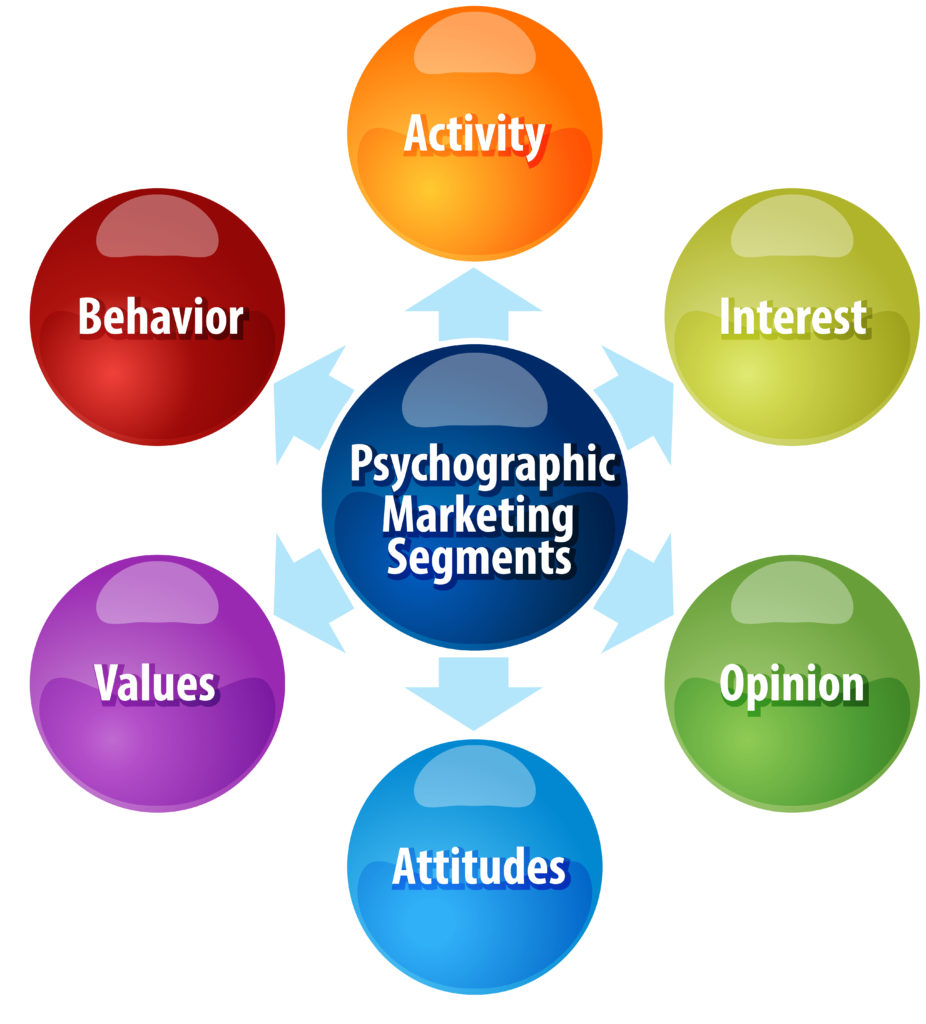
Examples of Psychographics Segmentation Advantages
-
Improved Product Positioning: By understanding customers’ lifestyles, beliefs, and attitudes, a company can position its products or services more effectively to resonate with those attributes. For example, a brand selling eco-friendly products can target consumers who value sustainability and environmental preservation.
-
Tailored Marketing Messages: Psychographic segmentation allows companies to create more personalized and impactful marketing messages. For instance, a travel company can target adventure-seekers with thrilling expedition ads, while they can target luxury-lovers with ads featuring upscale resorts and premium services.
-
Enhancing Customer Experience: Companies can enhance the customer experience by aligning their services with their customers’ behavior and preferences. A streaming service, for example, might recommend shows based on a viewer’s preferences and habits, thereby improving the user experience and increasing engagement.
-
New Product Development: Insights from psychographic segmentation can guide the development of new products or services that meet the unmet needs of specific customer segments. For example, a fitness brand could launch a line of home workout equipment targeted at busy professionals who value health but have limited time for gym visits.
-
Better Market Segmentation: Psychographic segmentation can help a company identify niche markets that may have been overlooked with traditional demographic segmentation. For example, a fashion brand may find a market segment of middle-aged consumers who follow the latest fashion trends and have a high spending power.
These examples demonstrate how psychographic segmentation can lead to more strategic decision-making in marketing and product development, ultimately improving customer engagement and business performance.
A step by step guide onto hot to find out the psychographic segmentation
Psychographic segmentation can be a bit more complex than other forms of market segmentation because it involves abstract elements such as values, attitudes, and lifestyle. However, by following these steps, you can effectively conduct psychographic segmentation:
-
Identify Your Objectives: Clearly define what you want to achieve through psychographic segmentation. This could be to improve your marketing campaigns, to create a new product or service, or to identify new markets.
-
Research Your Market: Conduct in-depth research on your target market. This can be done through surveys, interviews, and focus groups. You can also review available industry research and reports. Your research should seek to understand your customers’ attitudes, values, behaviors, lifestyle, and interests.
-
Design Psychographic Questions: These should aim at uncovering your target customers’ lifestyle, behavior, and psychographic attributes. These can include questions about their hobbies, their values, their personality traits, and their lifestyle.
-
Conduct Surveys and Interviews: Distribute your designed survey to a broad but relevant group of customers. Make sure to include open-ended questions that allow customers to freely express their attitudes, beliefs, and lifestyles.
-
Analyze the Data: Once you have collected the data, analyze it to identify common traits, preferences, and behaviors. Look for patterns and group respondents with similar characteristics together.
-
Create Psychographic Segments: Based on the patterns you find, create distinct psychographic segments. Each segment should represent a group of customers who share similar values, attitudes, and lifestyles.
-
Apply Your Findings: Use these psychographic segments to tailor your marketing messages, product development, and customer experience. This should help improve engagement, loyalty, and ultimately, revenue.
Remember, psychographic segmentation should be done periodically as people’s attitudes, lifestyles, and behaviors can change over time. It’s also important to keep ethical considerations in mind and ensure customer data is collected, stored, and used in a manner that respects privacy and complies with relevant laws.

